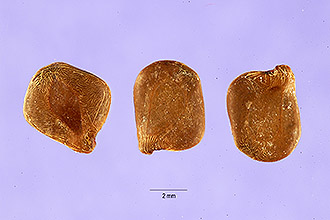Cassia hebecarpa Fernald var. longipila E.L. Braun
Scientific Name: Cassia hebecarpa Fernald var. longipila E.L. Braun

| General Information | |
|---|---|
| Usda Symbol | CAHEL |
| Group | Dicot |
| Life Cycle | Perennial |
| Growth Habits | Forb/herb |
| Native Locations | CAHEL |
Plant Guide
Use soil moisture sensors to measure the soil moisture of Cassia hebecarpa Fernald var. longipila E.L. Braun.
Fact Sheet
Alternate Names
Cassia hebecarpa, American senna, and partridge tree , Use soil moisture sensors to measure the soil moisture of Cassia hebecarpa Fernald var. longipila E.L. Braun.
Uses
Ethnobotanical: Several senna species are purgatives or laxatives depending on the dose. The leaves and pods of the wild senna contain compounds called anthraquinones, which are powerful laxatives. For this reason cattle and other herbivores avoid grazing the plants. Landscaping and Wildlife: This is a stunning plant in bloom and has attractive foliage. It is popular for meadow plantings and in native landscape gardens. The seed are eaten by some game birds, including quail. The flowers are primarily attractive to bumblebees and halcid bees. The extra-floral nectaries are attractive to ants, and other insects including ladybird beetles. It’s thought that these insects protect the plant from other insects that would attack the foliage. The caterpillars of some Sulfur butterflies rely on wild senna foliage as a food source.
Status
In the Northeast U.S. wild senna is state listed as threatened or endangered due primarily to habitat loss. The Pennsylvania Biological Survey considers wild senna to be endangered. Please consult the PLANTS Web site and your State Department of Natural Resources for this plant’s current status (e.g. threatened or endangered species, state noxious status, and wetland indicator values).
Description and Adaptation
Adaptation
Adaptation
Wild senna is a large, long-lived, herbaceous perennial, legume, .5 – 2 meters tall. The stout, central stem is light green, and slightly hairy in the upper stem and at the base of the upper compound leaves. The compound leaves are even-pinnate with about 10 – 20 leaflets. The medium to dark green leaflets are individually up to 2 - 5 centimeters across. Each leaflet is oblong, with smooth margins and a pointed tip. Near the upper base of a compound leaf is a small club-shaped gland; this gland secrets nectar to attract certain kinds of insects. From the axils of the upper compound leaves upright racemes of yellow flowers form from July – August. Each unscented flower is about 15 millimeters across; has 5 pale yellow sepals and petals, 10 stamens with black anthers and a conspicuous pistil with long white hairs. The dark brown seedpods are about 10 centimeters long when fully mature in September – October. The seed pods have 10 – 18 segments and split explosively. There are about 50 seeds/gram. The root system of wild senna consists of a central taproot and rhizomes which often forms vegetative colonies. It is not yet known if the plant has the ability to fix atmospheric nitrogen. Distribution: Wild senna is widely distributed in the eastern U.S. from Ontario, Canada south to Georgia. It is generally found on disturbed sites, moist meadows, pastures, fields or roadsides in full or partial sun. It often flourishes within the floodplain of rivers. While it prefers moist soils it will also grow on dry sites.
Plant Production
Production
Production
To produce plugs, seed should be sown indoors at least 7 weeks before transplanting seedlings outdoors.
Establishment
This species is best planted in the spring or early fall from container stock to ensure success. They should be spaced at about 60 – 90 centimeters apart. For direct sowing, scarified seed may be spring or fall planted at a depth of 3 millimeters and will germinate the following spring. As with many other legumes, wild senna plants initially send their energy into their root system, therefore the top of the plant will be slow to develop. This initial slow top growth in the first two years is normal, especially in the early spring. Once plants have become established they will grow vigorously and are very drought tolerant. Wild senna should be grown in soil that has good drainage in either a sunny or partly shaded location. This plant grows naturally in damp, fertile soils and under these conditions a height of 7 feet can be attained. In a drier soil the plant will grow to about 3 feet and tend to be less floppy.
Management
Wild senna is a hardy plant with relatively few problems. This species is easy to grow and maintain with moderate levels of N, P and K. It forms large clonal colonies. Due to the taproot of this plant it is difficult to transplant or divide.
